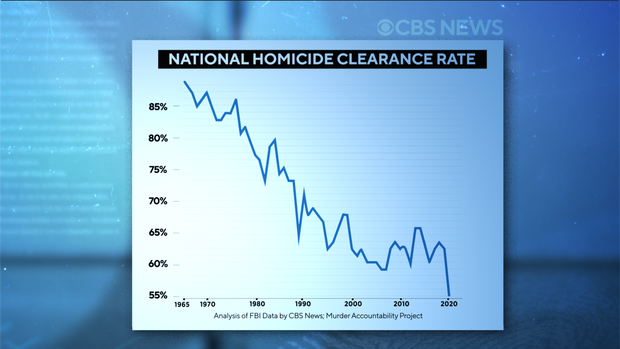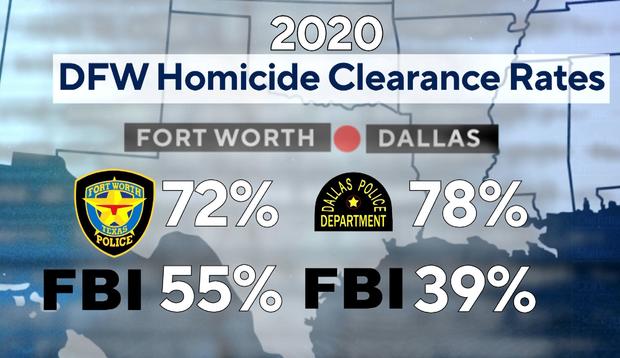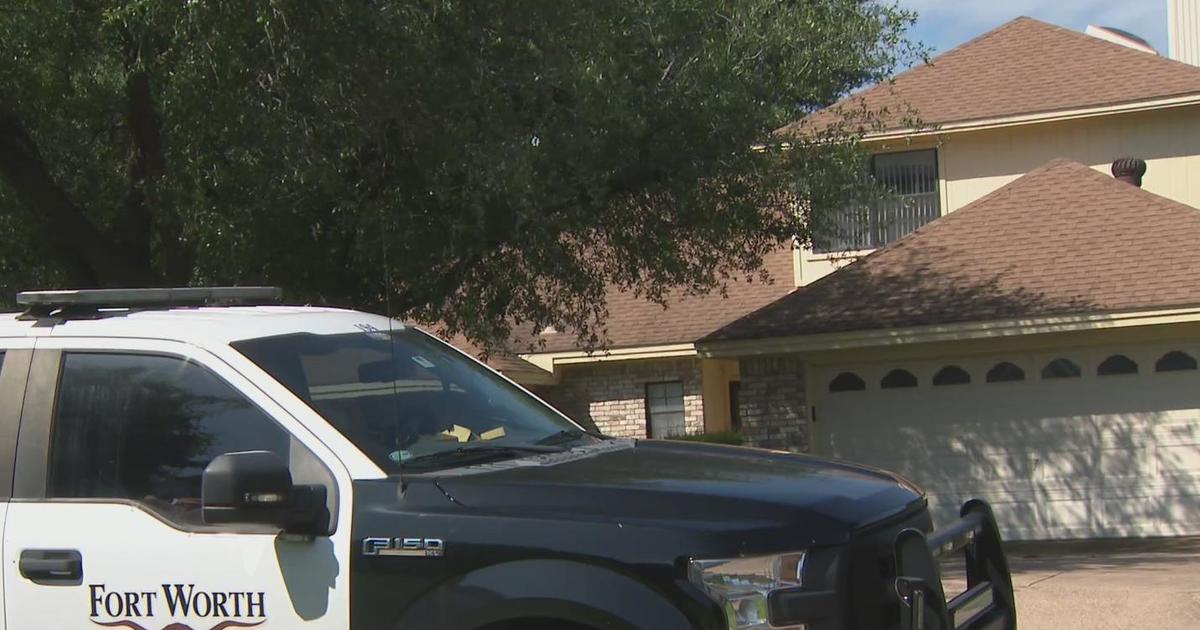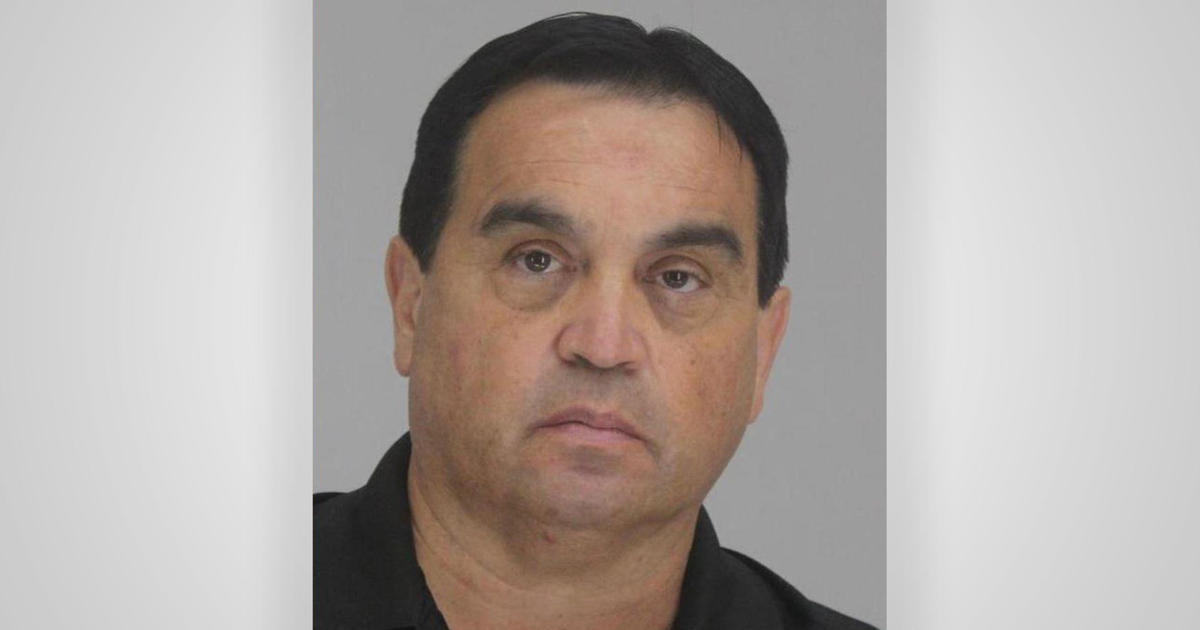More murders going unsolved nationally, but Dallas-Fort Worth may be getting less credit than it deserves
DALLAS (CBSDFW.COM) - Five years after her son's murder, Bridgett Williams is still trying to piece together what happened.
"I can talk about him now without crying, and so I'm proud of myself for that," she told CBS 11.
Grady Dunn was on his way home in January of 2017, when another driver rear-ended him, pulled a gun, and tried to rob him. Grady hit the gas and was shot. Dallas police found video of the other car, but never identified the shooter.
"No one's ever been brought to justice. Don't know if people are looking into it anymore. Kind of feels like the cases are just sealed up and boxed up somewhere. That's how I feel. I just feel like it's just forgotten," she said.
Murder, according to the FBI, is the most likely crime to be solved in the US, but nationally the rate of success has been in decline for years.
Research by the CBS News Innovation Lab found in Texas law enforcement normally cleared more than 70% of murder cases until 2016 when those rates started to fall. In 2020, the year for which the most recent state data is available, it hit 53%.
Finding out how our local police are doing proved harder.
Fort Worth police report they cleared 72% of murders in 2020, but FBI records show them clearing a bit less – 55%. Likewise, Dallas Police report they cleared 78% of murders in 2020, while FBI records show them doing half that number – 39%.
When asked, both departments insisted their internal records were the accurate ones, but CBS 11 pressed Dallas police to explain the significant discrepancy in data for its department. The department's intelligence division investigated and discovered errors in the reporting process. It's now working to correct its record in state and national databases to reflect its much higher success rate.
In an e-mail, Lt. Stephen Bishopp, who oversees data management, wrote CBS 11, "[We] are firmly dedicated to getting DPD's offenses/arrests correctly reported. Without you pushing the issues, we would have never known or even looked at the differences, much less why they occurred."
A homicide clearance rate is a significant metric for evaluating a police department's effectiveness.
In a recent interview with former Dallas police chief Renee Hall, CBS News correspondent Jim Axelrod asked, "Does everyone know that in a department we are basically going to be as good as our murder clearance rate?"
"Most chiefs understand that," she responded.
Her own father's murder, in the line of duty as a Detroit police officer, was never solved.
"I'm probably scarred today because of that, and so I understand what it means to others because I know what it means to me," Hall said.
UT Dallas professor Tim Bray supervised data collection as a former associate bureau chief for the Illinois State Police, and sees the clearance rate as a valuable tool.
"There is some desire to know, how is Dallas doing against our peer cities? What are we not doing that these other cities are? Or, what can they learn from us?" he said.
Many factors, he said, can affect a department's success.
"I want to understand whether or not the types of crimes have changed, whether staffing levels have changed, whether the training of my detectives has gone down over time," he said.
Chief Hall told CBS News keeping homicide units properly staffed has been difficult with departments, like Dallas, losing officers faster than they can hire them.
"I came in with 600 fewer officers than my predecessor. Same challenges," she said.
In 2017, when she started, there were 28 homicide detectives. At one point a year later, there were just 16. One of the many cases that had to be re-assigned was Grady Dunn's.
"It's just not fair because all families have a right to find out what happened," said his mother.
Bridgett hasn't given up on one day getting answers herself. She carries her son with her always, wearing a necklace with his picture.
"I keep Brady alive. I keep his case in the back of my mind," she said.
On every birthday, every anniversary, she calls police to check in, to remind them their work isn't done.
"I would like to know there's not a murderer walking around," she said. "That would close up part of the hole that's in my heart right now."
Current leadership at both the Dallas and Fort Worth Police Department declined a request to interview about their murder clearance rates. So, the CBS News Innovation Lab dug into the data looking for answers and discovered a murder is much more likely to be solved when the victim is White.
The reasons behind that are complicated. Tune in Thursday night at 10 p.m. to learn more.
Complete coverage of "Crime Without Punishment" from our CBS stations across the country and CBS News is available here.






